
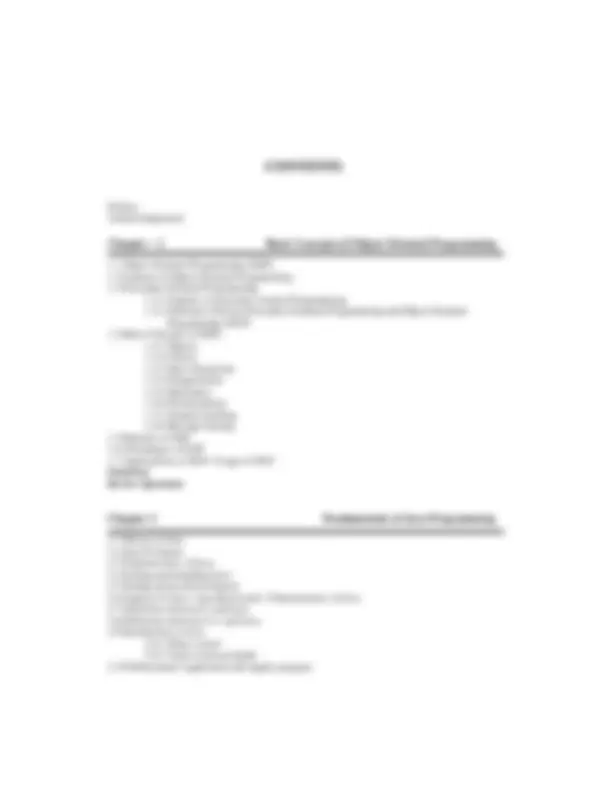
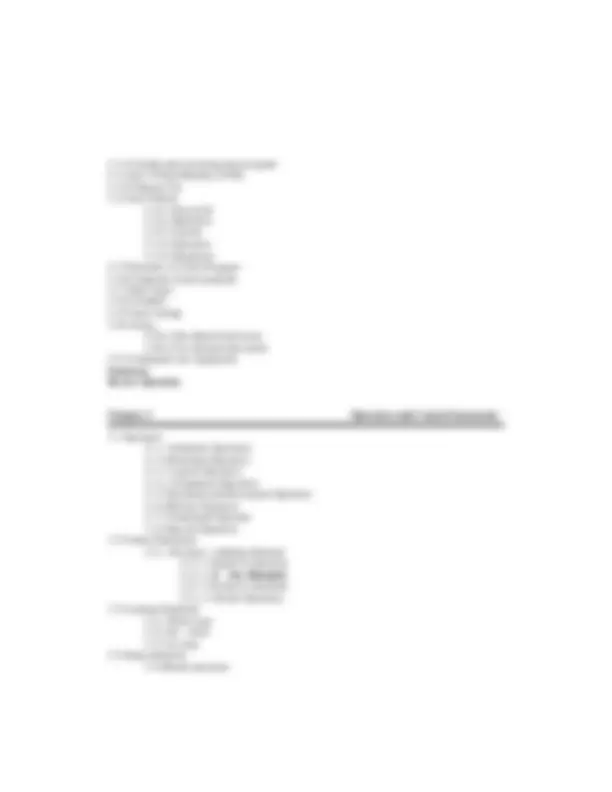
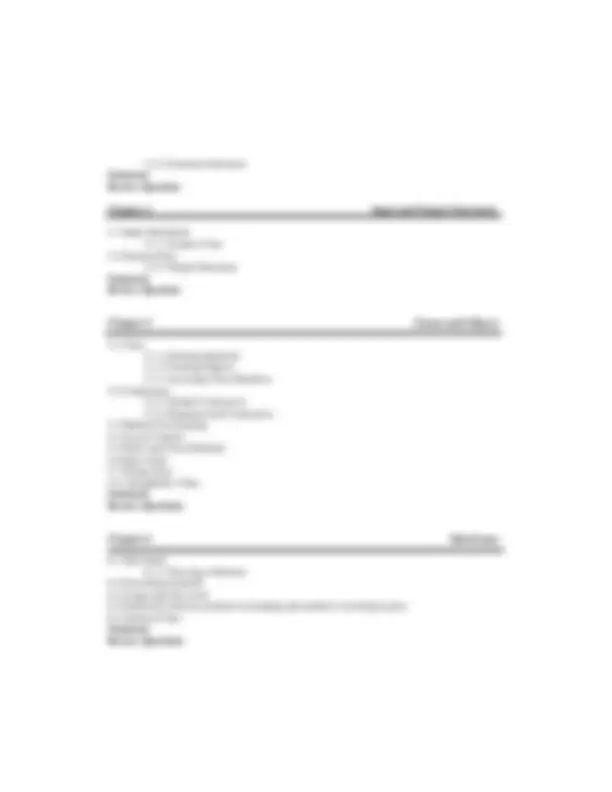
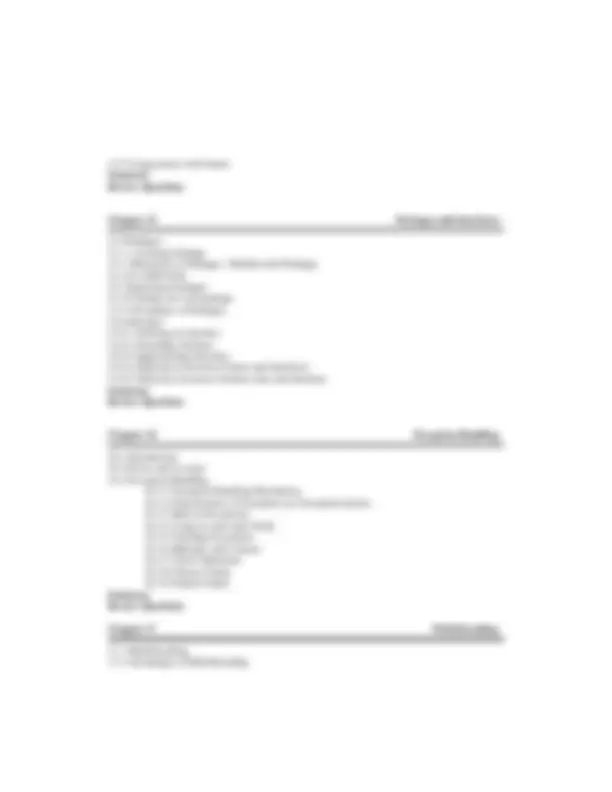
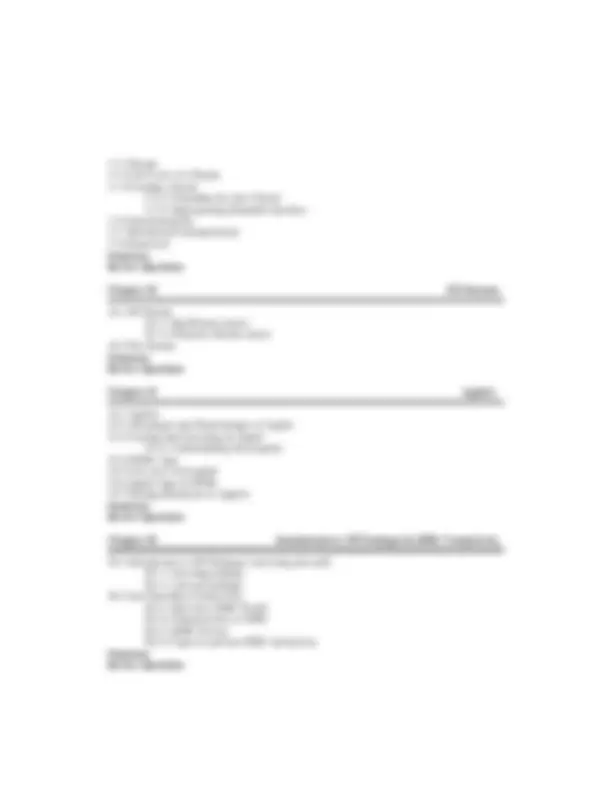
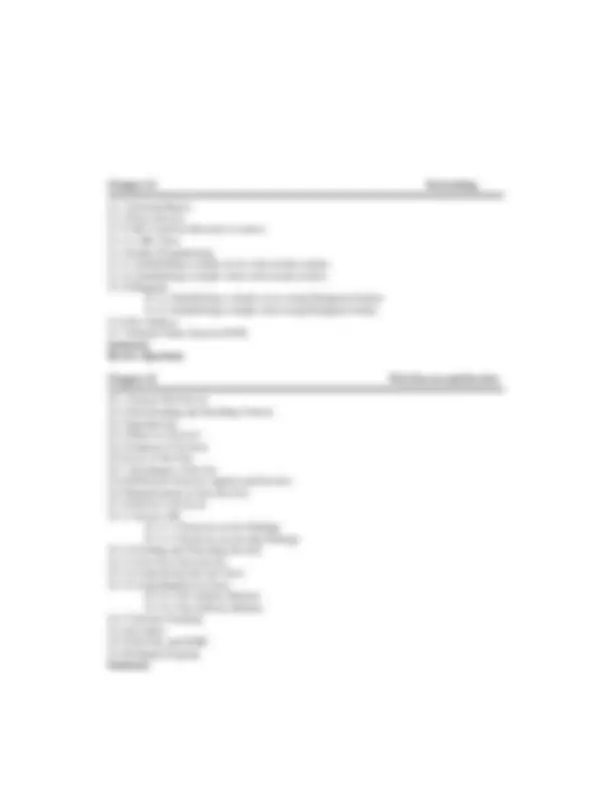


Study with the several resources on Docsity

Earn points by helping other students or get them with a premium plan


Prepare for your exams
Study with the several resources on Docsity

Earn points to download
Earn points by helping other students or get them with a premium plan
Community
Ask the community for help and clear up your study doubts
Discover the best universities in your country according to Docsity users
Free resources
Download our free guides on studying techniques, anxiety management strategies, and thesis advice from Docsity tutors
Java Programming By Dr.P.Rizwan Ahmed
Typology: Exams
1 / 12

This page cannot be seen from the preview
Don't miss anything!







Java
Programming (Fundamentals of Java, Applet, AWT, Swing, Servlets, Java Beans, EJB and JSP)
THIRD EDITION
Dr.P.Rizwan Ahmed,MCA.,M.Sc.,M.A.,M.Phil.,Ph.D, Head of the Department Department of Computer Applications & Post Graduate Department of Information Technology Mazharul Uloom College, Ambur – 635 802 Tamil Nadu, INDIA.
Margham Publications No.24, Rameswaram Road, T- Nager, Chennai- 600 017 Phone:(044) 2432 2469 Web Site: www.margham.in E-mail: www.margham.tn@gmail.com
2.11 Creating and executing Java program 2.12 Java Virtual Machine (JVM) 2.13 Character Set 2.14 Java Tokens 2.14.1 Keywords 2.14.2 Identifiers 2.14.3 Literals 2.14.4 Operators 2.14.5 Separators 2.15 Structure of a Java Program 2.16 Comments in java program 2.17 Data Types 2.18 Variables 2.19 Type Casting 2.20 Arrays 2.20.1 One dimensional array 2.20.2 Two dimensional arrays 2.21 Command Line Arguments Summary Review Question
Chapter 3 Operators and Control Statements
3.1 Operators 3.1.1 Arithmetic Operators 3.1.2 Relational Operators 3.1.3. Logical Operators 3.1.4. Assignment Operators 3.1.5 Increment and Decrement Operators 3.1.6 Bitwise Operators 3.1.7 Conditional Operator 3.1.8 Special Operators 3.2 Control Statement 3.2.1. Decision – making statement 3.2.1.1 Simple if statement 3.2.1.2. if…else Statement 3.2.1.3 Nested-if statement 3.2.1.4. Switch Statement 3.3 Looping Statement 3.3.1 While loop 3.3.2 Do - while 3.3.3 for loop 3.4 Jump statement 3.4.1Break statement
3.4.2 Continue Statement Summary Review Question
Chapter 4 Input and Output Statements
4.1 Input Statements 4.1.1 Scanner Class 4.2 System Class 4.2.1 Output Statement Summary Review Question
Chapter 5 Classes and Objects
5.1 Class 5.1.1 Defining Methods 5.1.2 Creating Objects 5.1.3 Accessing Class Members 5.2 Constructor 5.2.1 Default Constructor 5.2.2 Parameterized Constructor 5.3 Method Overloading 5.4 Access Control 5.5 Static and Fixed Methods 5.6 Inner Class 5.7 String Class 5.8 StringBuffer Class Summary Review Questions
Chapter 6 Inheritance
6.1 Inheritance 6.1.1 Deriving a Subclass 6.2 Overriding methods 6.3 Using super keyword 6.4 Difference between method overloading and method overriding in java 6.5 Abstract Class Summary Review Questions
Chapter 11 Swing Components-II
11.1 JCheckBox Class 11.2 JComboBox 11.3 JSlider 11.4 JList 11.5 JFrame 11.6 JPanel Summary Review Questions
Chapter 12 Event Handling
12.1 Introduction 12.2 Event Handling 12.3 Mouse Event Handling 12.4 Adapter Classes 12.5 Key Event Handling Summary Review Questions
Chapter 13 Layout Managers
13.1 Layout Manager 13.1.1 Flow Layout 13.1.2 Border Layout 13.1.3 Grid Layout 13.1.4 Card Layout Summary Review Questions
Chapter 14 Graphics and Java2D
14.1 Graphics and Java2D 14.1.1 Graphic Contexts and Graphic Objects 14.2 Color Control 14.3 Font Control 14.4 Graphics Class 14.4.1 Drawing Lines, Rectangles, Ovals and Arcs 14.4.1.1Drawing Lines 14.4.1.2 Drawing Rectangles 14.4.1.3 Drawing Ovals 14.4.1.4 Drawing Arcs
14.5 Using menus with frames Summary Review Questions
Chapter 15 Packages and Interfaces
15.1Packages 15.1.1 Creating Package 15.1.2Hierarchy of Package: / Multileveled Package: 15.2 CLASSPATH 15.3 Importing Packages 15.4 Creating our own package 15.5 Advantages of Packages 15.6 Interface 15.6.1 Defining an interface 15.6.2 Extending interface 15.6.3 Implementing Interface 15.6.4 Differences between Classes and Interfaces 15.6.5 Difference between Abstract class and Interface Summary Review Questions
Chapter 16 Exception Handling
16.1 Introduction 16.2 Errors and its types 16.3 Exception Handling 16.3.1 Exception Handling Mechanism 16.3.2 Classification of Exception (or) Exception classes 16.3.3 Built in Exceptions 16.3.4 Using try and catch block 16.3.5 Catching Exceptions 16.3.6 Multiple catch clauses 16.3.7 Throw Statement 16.3.8 Throws Clause 16.3.9 Finally Clause Summary Review Questions
Chapter 17 Multithreading
17.1 Multithreading 17.2 Advantages of Multithreading
Chapter 21 Networking
21.1 Network Basics 21.2 Proxy Servers 21.3 URL (Uniform Resource Locator) 21.3.1 URL Class 21.4 Socket Programming 21.4.1 Establishing a simple server with stream sockets 21.4.2 Establishing a simple client with stream sockets 21.5 Datagram 21.5.1 Establishing a simple server using Datagram Sockets 21.5.2 Establishing a simple client using Datagram Socket 21.6 Net Address 21.7 Domain Name System (DNS) Summary Review Questions
Chapter 22 Web Servers and Servlets
22.1 Tomcat Web Server 22.2 Downloading and Installing Tomcat 22.3 Introduction 22.4 What is a Servlet? 22.5 Features of Servlets 22.6 Uses of Servlets 22.7 Advantages of Servlet 22.8 Difference between Applets and Servlets 22.9 Requirements of Java Servlets 22.10 Servlet Life Cycle 22.11 Servlet API 22.11.1 The javax.servlet Package 22.11.2 The javax.servlet.http Package 22.12 Creating and Executing Servlets 22.13 Your First Java Servlet 22.14 Using GenericServlet Class 22.15 Using HttpServlet Class 22.15.1 The doGet() Method 22.15.2 The doPost() Method 22.17 Session Tracking 22.18 Cookies 22.19 Servlets and JDBC 22.20 Sample Program Summary
Review Questions
Chapter 23 Java Beans
23.1 JavaBeans: An Introduction 23.2 JavaBeans Concepts 23.3 Advantages of Java Beans 23.4 Elements of a JavaBeans 23.5 Types of JavaBeans 23.6 Bean Properties 23.6.1 Different Types of Properties 23.7 Bean Developer Kit (BDK) 23.8 Starting the BDK 23.9 Adding a Bean to the ToolBox 23.10 Dropping a Bean on the BeanBox 23.11 Editing Bean Properties 23.12 Saving and Restoring Beans 23.13 Using the BDK 23.13.1 Create and Configure an Instance of the Molecule Bean 23.13.2 Create and Configure an Instance of the OurButton 23.14 JAR Files 23.15 Creating Simple Bean Summary Review Questions
Chapter 24 Enterprise Java Beans (EJB)
24.1 Introduction to Enterprise JavaBeans 24.2 EJB History 24.3 Benefits of EJB 24.4 Difference between JavaBeans and Enterprise JavaBeans 24.5 Restrictions on EJB 24.6 Types of Enterprise JavaBeans 24.6.1 Session Beans 24.6.2 Entity Beans 24.6.3 Message-Driven Bean 24.7 EJB Architecture Summary Review Questions
Chapter 25 Java Server Pages (JSP)
25.1 Introduction 25.2 Advantages of JSP